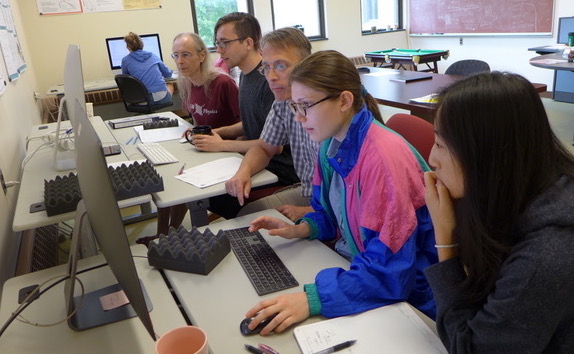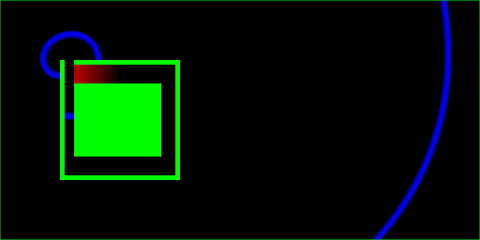Wooster’s summer 2019 Sherman-Fairchild group just published, “Disruption and recovery of reaction–diffusion wavefronts interacting with concave, fractal, and soft obstacles”, in Physica A. Working with Fish Yu ’21, Chase Fuller ’19, Margaret McGuire ’20, and Niklas Manz (Physics) was wonderful.

Sherman-Fairchild group, summer 2019.
Extending previous work with Reba Glaser (SUNY Geneseo)’19 and Nate Smith ’18, we wrote computer simulations to document the distinct recovery of reaction–diffusion wavefronts disrupted by a variety of obstacles. Curvature dependent wavefront velocities ultimately restore the wavefronts, with perturbations that decay as power-law functions of time. But concave, spiral, and fractal obstacles can sustain wavefronts locally for long times. Soft obstacles with variable diffusivity, either intrinsically or due to light sensitivity, can enforce one-way propagation and, appropriately configured, can locally and indefinitely sustain incident wavefronts, creating clocks or repeaters, beating hearts for these excitable systems.

Soft obstacle with variable diffusivity (red gradient) allows wavefronts to circulate only counter clockwise inside the square channel, creating a kind of clock.

Thanks, Mark! I enjoy reading your posts as well.